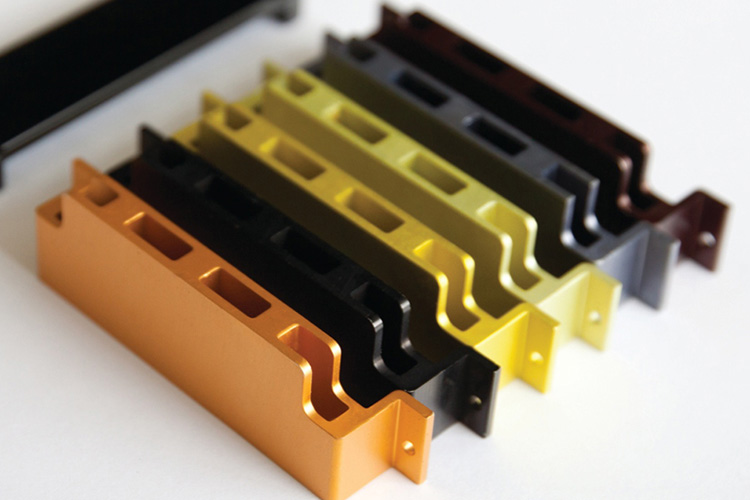Anodizing aluminum can produce high-quality finishes, but defects can arise due to various factors in the process. Here are some common defects and their potential solutions:
1. Burn Marks
Causes:
– High current density.
– Poor electrical contact.
– Inadequate cooling.
Solutions:
– Reduce current density.
– Ensure proper electrical contact between the parts and the racks.
– Improve cooling in the electrolyte bath.
2. Color Variation
Causes:
– Inconsistent alloy composition.
– Uneven anodizing time or temperature.
– Variable dye concentration or immersion time.
Solutions:
– Use alloys with consistent composition.
– Maintain consistent anodizing time and temperature.
– Ensure uniform dye concentration and consistent immersion times.
3. Pitting
Causes:
– Contaminants in the electrolyte.
– Poor cleaning or rinsing before anodizing.
– High chloride ion concentration in the anodizing bath.
Solutions:
– Regularly filter and clean the electrolyte solution.
– Ensure thorough cleaning and rinsing of parts before anodizing.
– Monitor and control chloride ion concentration in the bath.
4. Streaks or Lines
Causes:
– Mechanical damage or scratches on the surface before anodizing.
– Residual lubricant or polishing compounds.
– Inconsistent etching or cleaning.
Solutions:
– Handle parts carefully to avoid mechanical damage.
– Thoroughly clean and degrease parts before anodizing.
– Ensure uniform etching and cleaning processes.
5. Poor Adhesion of Dye
Causes:
– Inadequate anodizing layer thickness.
– Contamination on the surface.
– Inconsistent dye bath conditions.
Solutions:
– Ensure proper anodizing layer thickness.
– Thoroughly clean parts before anodizing.
– Maintain consistent dye bath conditions, such as temperature and pH.
6.Peeling or Flaking
Causes:
– Inadequate sealing of the anodized layer.
– Overly thick anodized layer leading to brittleness.
– Poor surface preparation.
Solutions:
– Ensure proper sealing of the anodized layer.
– Optimize anodizing parameters to achieve the desired layer thickness.
– Ensure thorough surface preparation before anodizing.
7. Powdery Coating
Causes:
– Over-etching during pre-treatment.
– Excessive anodizing time.
– Contamination in the anodizing bath.
Solutions:
– Control etching time and conditions.
– Optimize anodizing time.
– Regularly clean and maintain the anodizing bath.
8. Non-Uniform Coating Thickness
Causes:
– Inconsistent electrical contact.
– Uneven current distribution.
– Improper racking or jigging.
Solutions:
– Ensure consistent and reliable electrical contact.
– Use appropriate rectifiers and controllers to maintain even current distribution.
– Optimize racking or jigging to ensure uniform exposure to the anodizing solution.

By identifying and addressing these defects, the quality and consistency of anodized aluminum parts can be significantly improved.



